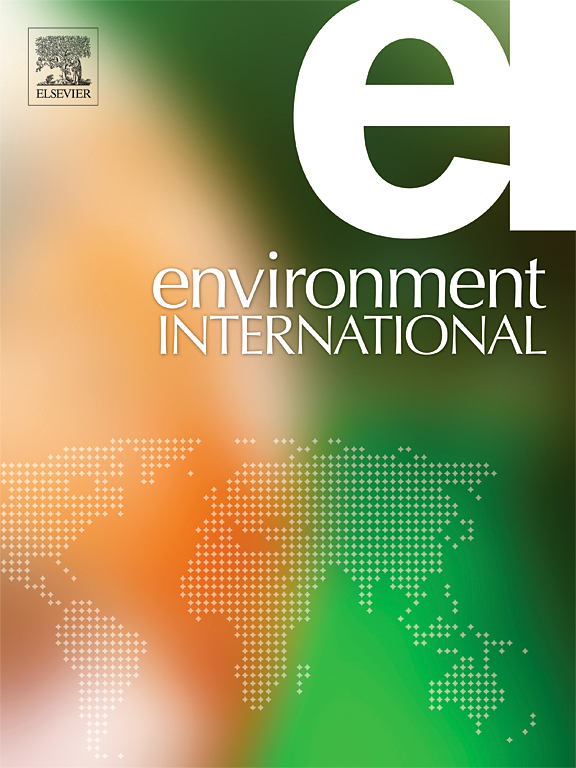Prenatal exposure to organophosphate ester flame retardants and behavioral outcomes in early childhood in the Environmental influences on Child Health Outcomes (ECHO) cohort
IF 9.7
1区 环境科学与生态学
Q1 ENVIRONMENTAL SCIENCES
引用次数: 0
Abstract
Background
Prenatal exposure to organophosphate esters (OPEs) has been linked to neurotoxic effects in children; however, epidemiological evidence remains inconclusive. We investigated associations of prenatal OPE exposure with child behaviors.
Methods
We analyzed data of 2948 mother–child dyads from 12 prospective cohorts of the Environmental influences on Child Health Outcomes (ECHO) Cohort. Nine OPE biomarkers quantified in prenatal maternal urine were modeled based on detection frequency. Child behaviors were assessed using the Child Behavior Checklist for Ages 1½–5. We used linear mixed effects models to examine associations between each OPE biomarker and composite T-scores. We evaluated child sex and social vulnerability as potential effect modifiers.
Results
Low bis(butoxyethyl) phosphate exposure, versus non-detect, was associated with higher T-scores for all composite scales (βinternalizing = 1.06, 95% confidence interval [CI]: 0.14, 1.98; βexternalizing = 1.06, 95% CI: 0.18, 1.95; βtotal = 1.19, 95% CI: 0.28, 2.11). Low and high bis(1-chloro-2-propyl) phosphate (BCPP) exposure, versus non-detect, were associated with higher T-scores for externalizing problems (βexternalizing = 1.18, 95% CI: 0.29, 2.07; βexternalizing = 1.12, 95% CI: 0.21, 2.04). Conversely, detectable dipropyl phosphate (25% detection) was associated with lower externalizing T-scores (βexternalizing = −0.89, 95% CI: −1.74, −0.04). Associations between high BCPP exposure and higher externalizing and total problem T-scores were stronger among children from highly vulnerable neighborhoods compared to those from less vulnerable neighborhoods (p-interaction < 0.1). Child sex modified associations for bis(1,3-dichloro-2-propyl) phosphate and high BCPP exposure, with males exhibiting greater adverse behaviors for all associations.
Discussion
Gestational exposure to several OPEs may be adversely associated with early behavioral development.
产前暴露于有机磷酸酯阻燃剂和儿童早期行为结局的环境影响儿童健康结局(ECHO)队列
产前暴露于有机磷酸酯(OPEs)与儿童的神经毒性作用有关;然而,流行病学证据仍然没有定论。我们调查了产前暴露与儿童行为的关系。
本文章由计算机程序翻译,如有差异,请以英文原文为准。
求助全文
约1分钟内获得全文
求助全文
来源期刊

Environment International
环境科学-环境科学
CiteScore
21.90
自引率
3.40%
发文量
734
审稿时长
2.8 months
期刊介绍:
Environmental Health publishes manuscripts focusing on critical aspects of environmental and occupational medicine, including studies in toxicology and epidemiology, to illuminate the human health implications of exposure to environmental hazards. The journal adopts an open-access model and practices open peer review.
It caters to scientists and practitioners across all environmental science domains, directly or indirectly impacting human health and well-being. With a commitment to enhancing the prevention of environmentally-related health risks, Environmental Health serves as a public health journal for the community and scientists engaged in matters of public health significance concerning the environment.
 求助内容:
求助内容: 应助结果提醒方式:
应助结果提醒方式:


